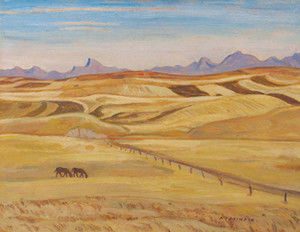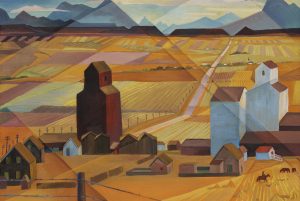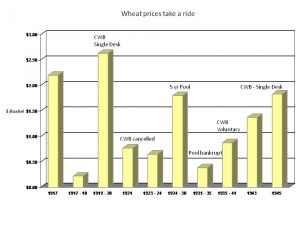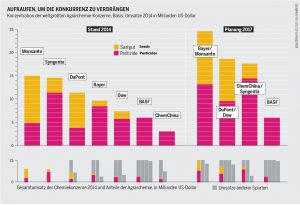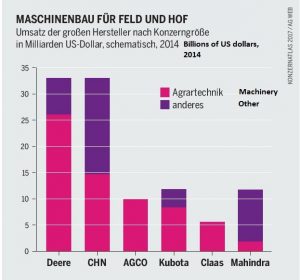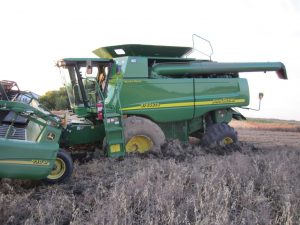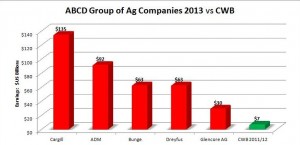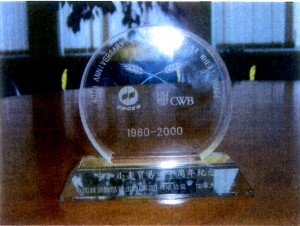International Women’s Day 2017
(March 8, 2017) In several previous posts about international women’s day the important role played by prairie grain farmers and their organizations in advancing the equality of women in Canada has been highlighted. From the 1890s the Territorial Grain Growers Association adopted a policy that women would be full and equal voting members and the web of support developed from there.
How wide that web spread was brought home to me this weekend when I attended a lecture by one of Canada’s foremost art historians and a former curator at the Glenbow, Lisa Christenson, at one of my favorite venues, the Red Deer Museum and Art Gallery.
The occasion was the presence of a very rare display of Group of Seven paintings. Most of us know the Group of Seven as upper-Canadian artists who, after their experiences of the First World War, explored and painted the forests and lakes of Ontario. Many of us know them from their paintings of the dreary and rock-bound Canadian Shield. But, some of them painted grain country.
What I did not know was the many rural Alberta connections to the Group of Seven in general and particularly the role of one of the Famous Five, Henrietta Muir Edwards in supporting Fort Macleod, Alberta artist Annora Brown.
To quote the curator of the Museum exhibit Mary Beth Laviolette’s book A Delicate Art, Brown was “a first generation pioneer of an emerging artistic community in Alberta.”
Part of the genesis of this artist lies with her exposure to the egalitarian feminist ideals of the western Canadian suffragettes she met at the meetings of the Women’s Christian Temperance Union and the Fortnightly Club. The Club was a southern Alberta book club of rural women formed in 1908 which arranged to have books borrowed from the distant Library of Montreal’s McGill University for the study of politics and art from around the world.
Muir Edwards was one of the participants along with other notable feminists of the time Nellie McClung and Louise McKinney. Muir Edwards recognized the artistic talent of the young Annora Brown and to quote Brown via Laviolette’s biography, Muir Edwards gave her art supplies and “A sheaf of water colour paper, at a time when the cost of even one sheet was inhibiting.”
Brown went on to study with the Group of Seven in Ontario and developed her own prairie way of looking at the natural world. She went on to write and illustrate one of the influential art works of prairie Canada, Old Man’s Garden which did much to foster in prairie culture a love of the natural landscape rooted in Aboriginal tradition and a fine attention to detail.
The exhibit, curated by Mary Beth Laviolette certainly contains its share of mountain scenes but much of it is devoted to paintings of the prairies, their inhabitants, and a few notable ones of grain elevators. Nobody who farms or has an eye for landscape can fail to appreciate these paintings. While he painted A.Y. Jackson was often a guest of prairie farm families who were part of that cooperative network. You can see one of Jackson’s original paintings where he even got the proportions of the elevators right, which is a rare and difficult thing to do.
The exhibition runs until March 12, 2017 at the Red Deer Museum and Art Gallery. Grain farmers will feel welcomed by the elevator and grain motifs built into the entry to the Museum and the prairie paintings from the 1920s to the 1960s will be at once familiar and interesting. Just go in the front door and turn left into the gallery – admission by donation – and celebrate international women’s day and its deep cultural connection to prairie grain farmers.
Are farmers dealing with 117 year old problem?
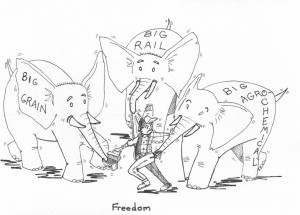 (February 28, 2017) One of the most well founded complaints from prairie grain farmers is about not getting fair weighing and grading of their grain by elevator companies. In fact 117 years ago this March the Senkler Royal Commission tabled its report documenting how prairie grain handling companies were exploiting farmers through price fixing, dishonest weights, and even more dishonest grades.
(February 28, 2017) One of the most well founded complaints from prairie grain farmers is about not getting fair weighing and grading of their grain by elevator companies. In fact 117 years ago this March the Senkler Royal Commission tabled its report documenting how prairie grain handling companies were exploiting farmers through price fixing, dishonest weights, and even more dishonest grades.
This Commission was part of how prairie farmers got the first pieces of legislation that would eventually lead to the Canadian Grain Commission with its mandate to enforce fairness in grading and weighing of grain.
But guess what? I and many others have been hearing complaints lately that demonstrate the grain elevator companies are behaving in ways that have a strong similarity to the findings of the Senkler Commission. With the end of the Canadian Wheat Board and the gutting of the Canadian Grain Commission by the Harper government we probably shouldn’t be surprised.
117 years ago the Senkler Commission observed: “the elevator owners have had it in their power to depress prices below what in our opinion farmers should realize for their grain. It would naturally be to their interest to so depress prices; and when buying, to dock as much as possible.”
The Commission found that farmers were baited into the elevator with promises of a high price for their first quality wheat and then switched to a lower payment either because it was claimed the grain was a poor quality, or the elevator had no room for number one wheat but did have room for a lower value grade. 117 years later we are hearing similar experiences from grain farmers across the prairies. Some things just never change.
The National Farmers Union is asking farmers for their experiences selling grain to elevators, mills, and other buyers. Instead of a Royal Commission holding meetings across Manitoba and the “North West Territories” as Alberta and Saskatchewan were then known, the NFU questionnaire will be mailed to NFU members and is available on-line so any farmer across Canada can put their information forward. The survey can be completed anonymously.
The NFU on-line survey also contains some useful gems of wisdom too many farmers may have forgotten. For example the law requires that any grain delivery contract between a farmer and a grain company must include provisions for a penalty to be paid to the farmer if the licensed grain company has not accepted the farmer’s grain (of the kind and grade of grain specified) during the delivery period defined in the contract.
It also contains a link to the Canadian Grain Commission web page explaining how to obtain a mandatory and binding grade on grain delivered to a licensed elevator. These provisions provide protection to farmers who use them.
The NFU will keep all individual responses confidential and aggregate the results for future publication. This is an opportunity for farmers to have their say and give the NFU and government current information on the behavior of the grain trade.
Get clicking here: NFU on-line survey
CETA enables giants in agriculture
(February 16, 2017) The approval by the European Union of the Canada-European Union Comprehensive Economic and Trade Agreement (CETA) makes the world safer for the global agricultural cartels and much less pleasant for Canadian farmers and the consumers in both jurisdictions.
Industry friendly farm groups, like the Alberta Wheat Commission, are accentuating the positive while closing their eyes to the reality of the giant global cartels setting themselves up to profit even more from farmers and food consumers.
The EU’s Parliament also ignored a very useful examination of the global agricultural cartel called The Agrafood Atlas 2017 from Germany’s Heinrich Boell Foundation and co-published with Oxfam Deutschland and the prestigious French newspaper Le Monde Diplomatique, among others. It contains some astounding information about global agricultural business. Unfortunately, the report itself is only available in German, but with thanks to their good graphs, Google translate, and a little patience, I can provide a summation of some of its findings.
(Note: some months after this article was published, the Agrafood Atlas was translated into English and can be found at the above link)
AGRO-CHEMICALS-SEEDS
Their report says that in agro-chemicals and seed 7 corporations currently hold dominant positions. Soon there will be only 4. Just 3 of them, the report says, will control over 60% of the global seed and chemical markets.
FERTILIZERS
Also on the input side for farmers are the fertilizer manufacturers. The top ten identified last year include two Canadian firms, Agrium and Potash Corporation, who are in merger talks.
Like grain, fertilizer is one of those bulk commodities that is very sensitive to transportation costs. So the merger of Agrium and Potash Corp will create an effective monopoly fertilizer seller leaving prairie farmers as a captive market.
GRAIN MARKETING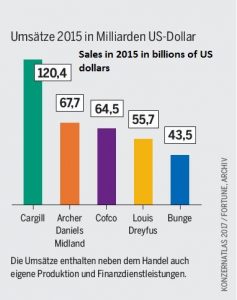
It will be no surprise to prairie farmers that “In wheat, maize, and soy beans there are only 4 international companies that dominate 70% of the market” – they’ve known about the ABCD group for decades, but what may be a surprise is that COFCO, the Chinese government and private food agency now ranks as number three.
FARM EQUIPMENT
Effectively there are only 6 farm equipment manufactures with CHN and John Deere holding about 70% of the global market with Mahindra and Kubota tied for a distant third, and Agco and Claas bringing up the rear.
ANIMAL GENETICS
This grim trend continues with animal genetics which have effectively been cornered by just 7 global corporate giants.
As these giant global corporations consolidate their power around the world, it is easy to see the coming attack on supply management of dairy, eggs, and chickens in Canada taking shape and following the model used to destroy the farmer-controlled Canadian Wheat Board.
Ratification of CETA by the rubber stamp Parliament in Ottawa will seriously injure the dairy sector, one of the few Canadian farm sectors that is successful without government subsidies and huge farm debt loads.
CETA will also place further pressure on Ottawa to continue privatizing the cereal grains’ genomes which farmers and the public have paid for over the years. We know from the miserable Canadian experience with the privatized canola model that private seed research costs more and delivers sub-standard yield increases. This also makes the Harper government’s destruction of Federal agricultural research libraries take on new significance.
Farmers find themselves surrounded by giant cartels on all sides and it certainly doesn’t help farmers’ bottom line to be stuck in the middle without the collective bargaining power they once had in grain handling and marketing. Prairie farmers are already feeling the pinch of exploitation by the private grain trade having seen a third or more of the value of their production taken from them by the agents of the grain companies of the ABCD group.
Canadians are learning about an economic rule of thumb known as the “iron law” of prices and wages: once a handful of corporations control the majority of the money in any sector, free markets are deader than door nails and without counter balances like marketing boards and labour unions, prices and wages are driven to subsistence levels.
The increasing debt burden in the farming sector since the Harper government killed the Canadian Wheat Board demonstrates just how quickly this can happen. Food consumers, facing extortionate grocery prices and falling real wages, will only be fooled for so long by bogus claims taxes are the cause of rising food prices as they see farmers getting less and less for the commodities they buy in the grocery store every day.
Given the reality of the giant cartels dominating essentially all the high ground of the global economy labelling treaties giving those corporations more power as “progressive” will not fool many people for long. Ratification of CETA will simply further empower giant corporations to take more money from farmers and consumers.
Looming problems in antibiotics a warning for plant breeding

1920 Alberta well baby clinic – LAC photo
(January 19, 2017) I had a great-aunt who only lived for nine days in 1919. Like so many children and young women in the age before antibiotics she was killed by a simple bacterium that can now be cured with a short round of antibiotics.
From the 1930s onward those antibiotics were developed by dozens of private companies driven by a profit motive usually provided by government procurements to address social need. However, we are seeing this model break down as the major pharmaceutical companies engage in a merger and acquisitions frenzy just like the recent mergers of the major agro-chemical-seed companies. The names of these so-called “life-sciences” companies will be very familiar to both farmers and medical professionals with Monsanto and Bayer immediately coming to mind.
Professor Matt Cooper, the Director of the IMB Centre for Superbug Solutions at the University of Queensland estimates there are now only about 1,500 scientists in the world who understand how to hunt for and develop new antibiotics. Earlier this year Radio Australia reported that AstraZeneca downsized from hundreds of people in its antibiotic lab to just 14. The report went on to say that when Cubist, a major independent pharmaceutical company was bought out by the pharmaceutical giant Merck, they fired all 120 antibiotic researchers. So between just these two companies the number of people working to keep the next generation of children safe from the common infections that killed my great-aunt some 98 years ago, has been reduced by a significant amount.
The reason is quite simple: antibiotics are not very profitable. Unlike treatments for excess blood pressure or cholesterol, which are used for the lifetime of the patient, antibiotics are seldom taken for longer than a couple of weeks. The result is the development of new antibiotics has essentially stalled since the pharmaceutical mergers and acquisitions frenzy placed profit before social obligation.
The looming catastrophe in the antibiotics field is an obvious warning that the private sector model is a failure and there is a clear conflict between making a profit and providing what amounts to an essential public good.
So this raises a red flag for farmers considering the future of cereals plant breeding. Cereals Canada, the Alberta Wheat, Barley, and Canola Commissions, and some members of the Manitoba Wheat and Barley Commission are promoting the idea that control of cereals research should be handed over to the agro-chemical-seed companies along with a substantial amount of farmers’ check-off money.
Now it is no surprise Cereals Canada favours privatizing the cereals genome since its board is dominated by two groups: representatives of the big grain handling companies and representatives of the big agro-chemical-seed companies. As every farmer knows, canola seed is ridiculously expensive compared to seed developed through public plant breeding.
Obviously if this privatization process is not stopped farmers will pay the same extortionate rates for all the other cereal crop seed stocks as well. As with canola, farmers will pay twice: once with their check-off dollars for the research and again to the agro-chemical seed companies for the right to use the seed genetics farmers have already paid to research. This is not to mention the built in conflict of interest this would create (read more here).
Since the Saskatchewan Wheat Commission is the only wheat commission on the prairies that is actually democratically elected by all wheat farmers paying for its operation, it is no surprise it has refused to join the industry-captured Alberta commissions and Cereals Canada in their quest to privatize the cereals genome. Manitoba farmers will have the opportunity to ask what the people running for positions on the Manitoba Wheat and Barley Commission stand for next month.
My friends in the medical community assure me that the end of the age of antibiotics is a life and death matter, and no doubt had she lived my late great-aunt would have understood that. But the control of the cereals genome is more than just Cereals Canada having its way and forcing farmers to pay its members much more for seed genetics. The cereals genome is just as much a matter of life and death as the antibiotic situation. The question for farmers and policy makers is will we make the same mistake with the cereals genome that has been made with antibiotics?
The year farms got smaller
(January 4, 2017) Like an old Queen once said of another year, 2016 was an Annus horribilis for most prairie farmers. Bumper crops ended up snowed under or degraded by excessive rainfall. The pull-type combine made a comeback with many farmers adding a four wheel drive tractor on standby to rescue combines stuck in the mud. But hey, when not stuck in the mud or buried in snow, the yields were great.
However, the big story of 2016 was the shrinking influence and market power of prairie farmers compared to the ever larger cartels they face on both the input and marketing side.
The merger of major agro-chemical seed companies like Bayer and Monsanto and the take-over of Syngenta by the Chinese Government’s “ChemChina,” come to mind. Not to mention fertilizer makers Potash Corp and Agrium agreed to a merger which would make that sector into one dominated by just three corporations surpassing the market dominance of the big four grain trade companies (ABCD group).
The government of Saudi Arabia and Bunge, one of the ABCD group, continued their building binge on the prairies and perhaps in Vancouver as well – using the Canadian Wheat Board (CWB) equity taken from farmers and effectively gifted to them by the Harper government.
Of course the loonies who killed the market power of prairie farmers by killing the CWB did not sit on their laurels this past year. They have managed to push both the Alberta NDP’s Rachel Notley and the photogenic Liberal Justin Trudeau into continuing to implement many of the Harper-era agricultural policies designed to make the world safe for big grain and chemical companies and decidedly less friendly for farmers.
While tout le monde in Alberta was all a quiver about the NDP carbon tax, the Notley government was ignoring calls to review provincially mandated financing of Alberta-based astro-turf groups aggressively pushing the introduction of genetically modified wheat on the Federal stage. Not to mention the Alberta Wheat Commission is already on record as demanding that our grain grading standards be harmonized with the much lower quality standards used by our global rivals. If this happens it will end one of the few remaining advantages prairie farmers have in the international grain market.
Not to be outdone, the Trudeau government followed the same bad advice from the industry captured Canola Council of Canada regarding Chinese canola grading concerns by lowering our dockage standards to match those of other nations. This amounted to giving the Chinese an automatic price discount while making it much easier for the multinational grain handling companies to pick and choose the source of canola for sale to China based on which farm community is most desperate to sell. This guarantees the Chinese and other customers the lowest possible price while throwing away our unique Canadian advantage, paid for by prairie farmers, for producing the cleanest and highest quality product on the planet.
This deeply foolish move gives the impression that Prime Minister Trudeau’s apparently shallow understanding of agriculture was taken advantage of by slick industry insiders manipulating a Federal Agriculture Minister from a province not noted for its grain production.
The beginning of 2016 saw the NDP adopt something called the “Leap Manifesto” for discussion. This collection of generalities and feel good statements called for, among other things, more local food production.
So it is appropriate to note that the holiday season of 2016 is likely to be the high point of local food production and consumption in Canada. To date all the milk, eggs, chickens, and turkeys are still grown on (mostly) western Canadian farms thanks to farmer-controlled marketing Boards. Given the Liberal endorsement of the Canada-EU Trade Agreement (CETA) and the peculiar lack of attention by the Alberta NDP, this will soon be a thing of the past.
In fact, as was said here some time ago, the disappearance of Canadian-grown grain is already starting. For those of us west of Thunder Bay, all our wheat products, pasta, and almost all the beer still come from grain grown on prairie farms although from more centralized processing plants. But for those of you east of Thunder Bay, now that the farmer-run Canadian Wheat Board has been killed, your bread and pasta may well be partly or wholly made with wheat from the Ukraine.
However, there are some bright spots in the grain outlook. In spite of the best efforts of the Alberta Wheat, Barley, and Canola commissions to see the control of the grains genome and plant breeding turned over to the big agro-chemical-seed companies, when given a vote, farmers have been firmly resistant. Another bright spot is many of the farmers who were paid by a major agro-chemical-seed company in the 1990s to spy on their neighbours and report about individuals questioning the value of introducing genetically modified wheat have retired.
The Trudeau Liberals have also brought some real sunny ways to the Federal scene. Research scientists have had their muzzles removed, and some key environmental research projects have been revived. More immediately important, Ottawa appears to have restored funding to agricultural research. And so far at least, the Minister of Transport has resisted the calls for further deregulating the railways coming from the same groups who want GM wheat.
So it would be fair to hope that Ottawa will continue to restore what Harper destroyed in Agriculture at the Federal level, and unlike what appears to be happening south of the medicine line, 2017 could well be a year of rebuilding the public trust in Canada. Time will tell.
Farmers lose in port storage arms race
(December 22, 2016) Some months ago I remarked on the amount of new grain bins farmers were purchasing (Prairie Arms Race) so they could store their crops for longer periods and ‘pool’ their returns by choosing when to give up ownership to one of the ABCD group’s agents. This need for grain storage is another cost for farmers from Ritz and Harper killing the Canadian Wheat Board. It is a reality that is a far cry from when Minister Ritz was gleefully assuring farmers that grain bin sales people would be very unhappy because grain would move so quickly “farmers will not have to start their trucks in winter” after the CWB was gone.
However prairie farmers are not only spending thousands on new grain bins, they will also be spending millions of dollars financing another arms race in storage and grain handling as grain handling companies are expanding or building new inland terminals. Not to mention announcements of at least two new port terminals for Vancouver.
Most farmers know that rather than itemize their costs, the grain handling companies hide them in a catch-all category called “basis” – a term sufficiently vague that it allows compliant economists and others to stop the conversation there. Repeated often enough it reliably induces a consensus trance in audiences and prevents uncomfortable questions.
Questions like: where is the justice in allowing a collection of oligarchs to take between one-third and one-half the value of the prairie grain crop away from farmers when farmers used to receive their crops’ full value by using the collective bargaining power of the Canadian Wheat Board?
One of the most recent additions to the storage and handling race is from Parrish and Heimbecker Limited (P&H) and Paterson GlobalFoods Inc. (PGF). They are well into the regulatory process to replace their 15,000 tonne port terminal on the Fraser River with a new 77,000 tonne model. This is a significant investment for these two smaller companies but only about a 5% net capacity gain for the port of Vancouver.
Using its deep pockets and the hundreds of millions of dollars effectively gifted to it from CWB assets (paid for by farmers) G3 Corp. has built new inland terminals and acquired existing ones across the prairies. They have also announced plans for new port terminals on both the east and west coasts. The one at Vancouver will have a reported capacity of 180,000 tonnes on the Burrard Inlet. If we accept reports, Vancouver’s terminal capacity is set to be increased by about 28% as a result.
However, it is unlikely this build-out will do much, if anything, to improve farm-gate grain prices for prairie farmers. We know when the companies can download costs, they do. That’s just good business for them. It is a rare farmer with the choice of more than one grain elevator at a delivery point. According to the Canadian Grain Commission, less than 10% of Manitoba delivery points have more than one Elevator Company. In Saskatchewan the number is 20% and in Alberta it is a mere 12%. That does not create much competition.
While some farmers may think grain companies compete for their grain it actually works the other way around with hundreds of farmers chasing one grain company. If there is any competition among grain companies, it will be paid for by other farmers being forced to take a lower price for the same grade and quality of grain some other time in the crop year or at some other delivery point in the system. With no effective regulation to prevent profiteering by the grain handling oligarchy it is all too easy for them to make farmers pay for the increased handling capacity they are building on speculation.
In spite of the monotonous claims to the contrary by the Western Grain Elevators Association, the cartel representing the grain elevator oligarchy, we know from impartial Canadian Transportation Agency hearings this problem is not a transportation issue.
With the CWB farmers typically received about 90% of the port price after elevation costs and about 80% after paying rail costs. We seem to be well on track to seeing agricultural economist James Nolan’s careful explanation in December of 2014 being confirmed by experience. He observed that without the CWB’s market power farmers were getting around 40 to 60% of a grain sale. He went on to note some economic models show that the farmers’ share could decrease to about 20%. With this speculative boom in grain handling capacity, it seems that model may just be moving closer to reality.
Shortest day of the year
(December 21, 2016) Today is the shortest day of the year and as is traditional on the winter solstice farmers will be looking forward to longer days and spring planting. Most will celebrate the season with family and friends.
Unlike the sun which we can expect to stop hovering close to the horizon, the port price of wheat has been stubbornly flat for most of the season according to Ag Canada’s weekly survey of port prices for various grains.
So on this shortest day of the year a typical prairie farmer can expect to take home $23,902.97 or a little over $7 dollars a bushel after deductions for a typical producer car of #1 wheat. Taking off the cost of inland elevation and cleaning, the farmer ought to be getting $6.50 a bushel at a minimum.*
So how is it that most farmers are only getting a meager $5 or so for their wheat? In spite of misleading prognostications by some compliant academics, we know the missing $1.50 (about five thousand dollars a grain car) is being taken by the private grain trade – money the single desk Canadian Wheat Board faithfully returned to farmers that is now going to foreign shareholders.
At solstice celebrations throughout history there have been elaborate ceremonies, feasts, and bonfires to encourage the sun to come back. This year a similar ritual has been repeatedly performed as academics and others make pronouncements on how grain prices will come back if a bonfire of farmers’ money is lit to placate the gods of grain handling and transportation.
Tomorrow I will look at why prairie farmers might be better served by the return of a single desk wheat board, rather than placing their faith in foreign corporations building more grain handling capacity to bring back grain prices.
* For those wondering, the actual numbers for a producer car from Alberta were:
#1 CWRS 13.5% protein
cumulative average
price FOB Vancouver: $309.29 (Ag Can indicator price – 16 Dec 2016)
Rail Freight: $33.50
Terminal Cleaning: $6.81
Other fees and dedications: $11.95
NET: $257.03 ($7.03/bushel)
Railways want farmers to put the free in their enterprise – again
(November 26, 2016) The latest news is the railways want somebody, anybody, to give them new grain hopper cars. Prairie farmers with unimpaired memories may be forgiven for having a sense of been there, done that.
In recent days Cargill has been touring some western farmers around its Vancouver terminal. They’ve been fed a steady drip of anxiety about how old the hopper car fleet is and how they should really ask themselves who should pay for new ones.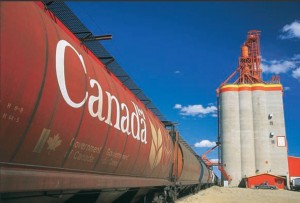
If this sounds like the same scam pulled for the Crowsnest Pass Freight Rate some thirty years ago, the reader would be correct. Back then the railways were complaining they could not afford to replace aging grain cars so the Crow had to go. Readers may remember that killing the Crow not only resulted in farmers paying higher freight rates but the farmer-owned Wheat Pools being forced to abandon over 80% of their elevators. Even with all that, the railways still complained they could not afford to upgrade the grain cars, bamboozling Ottawa, the Prairie Provinces, and ultimately even the Wheat Board into buying them shiny new grain hopper cars.
Fast forward to the present and once again the railways are complaining about grain cars falling apart and being in desperate need of replacement. Remember these are publically owned grain cars with operating agreements that say the railways are responsible for maintaining and replacing them. But the railways don’t want to do that. Since the Crow is dead, they’ve switched the “poor me” song from the Crow to the Maximum Revenue Entitlement (MRE), sometimes known as the “rail revenue cap.” But the message is the same: they can’t afford to invest in new rail cars for hauling grain. In fact the MRE provides a generous return on any investments, including new cars, the railways make.
But hey, it seems they’re trying to scare farmers and a new transportation minister in Ottawa into giving them a new fleet of cars. But before that happens wait for the usual compliant academics to crawl out of the woodwork to pontificate on how doing away with the MRE, which protects farmers, will really be good for farmers. Who knew farmers didn’t need any protection? Now I’m waiting for the Western Canadian Wheat Growers Association, who did such a good job of cheerleading for the railways the last time, to come out swinging against the MRE. After all, like the spoiled teenager who demands a new car from daddy when he wrecks the old one, the railways feel entitled.
This proves again the old scams are the best. If farmers don’t understand the MRE formula they will play into the railways’ hands, by agreeing the formula needs to be adjusted so the railways can afford new cars.
Remember during the Crow debate most farm leaders understood the context and did not take the railways at their word. We can only hope these current ones have the same healthy skepticism. Based on the US experience with railway deregulation, some economists have estimated prairie farmers could well see their grain freight rates increase 50%. History looks set to repeat itself if farmers and the Minister of Transport aren’t careful.
PM acts on bad advice about canola
(September 5, 2016) How would you feel if you bought a thousand grams of rice to feed your family and found 25 grams of the bag made up of weed seeds, stems and chaff? What if you complained to the retailer and the leader of China flew in to say your demand for a clean product to feed your family could wait for further discussion? What if the retailer told you that you were scientifically ignorant and that was that?
Most reasonable people would be astounded and offended. Yet this is exactly what has happened on the issue of canola sales during the Prime Minister’s visit to China.
It has long been an open secret that when a grain ship is loaded with canola the companies doing so will normally add weed seeds, stems, and pods to make the 2.5% “dockage” limit specified by the Canadian Grain Commission.
This is a rip-off of both prairie grain farmers and the customers buying Canadian sourced canola from the oligarchy running the international grain trade. Here is why:
Before Harper and Ritz fired the Canadian Grain Commission’s impartial government inspectors their inspections found the vast majority of all the grain rail cars, including canola, came in with less than 2% weed seeds and other foreign material aka “dockage.” In a survey carried out for a manual on how to ship a producer car, it was found that one in ten rail cars graded at zero percent dockage.
Reflecting the fact the now dead farmer-controlled Canadian Wheat Board serviced the high-end niche market for human consumption wheat, durum, and barley, the export standard for CWRS wheat is still 0.4% (four tenths of one percent) for foreign material that can be removed, and 0.3% in malt barley.
At almost seven times more, the canola standard of 2.5% foreign material is a huge difference. How the Grain Commission came to allow this incredibly sloppy export standard in canola is one for the historians but the fact is that now it is a problem because Chinese customers don’t want that level.
It is also a problem for prairie farmers on two levels. Many farmers harvesting canola report that if everything goes well, they regularly have their canola come straight from the combine at a mere one percent dockage. Yet farmers have their grain cheques lowered for cleaning their crop to an export standard two and a half times worse! We also know from impartial Canadian Grain Commission “inward inspections” – unfortunately discontinued by the Harper administration – most rail cars come in at 2% dockage or less.
This shows farmers are not really being charged for cleaning, unless you consider adding weed seeds, chaff, stems, and pods to canola as “cleaning.” This is an issue the Canola Council of Canada and the Provincial Canola Growers Associations have been conspicuously silent on in spite of taking millions of dollars from canola farmers each year to advocate for them.
 But it gets worse: those foreign materials in Canadian canola carry microscopic plant pathogens and fungal spoors that create costly problems for prairie canola farmers – problems which the Chinese do not have and do not want to import. Yet when the Chinese announced they would be asking for Canadian canola shipments to meet a standard of one percent dockage, they heard insulting nonsense from industry captured groups like the Canola Council of Canada saying Chinese concerns were not “science based.” Setting aside the very reasonable concerns the Chinese have about plant disease, I wonder what part of the “customer is always right” the Canola Council does not understand?
But it gets worse: those foreign materials in Canadian canola carry microscopic plant pathogens and fungal spoors that create costly problems for prairie canola farmers – problems which the Chinese do not have and do not want to import. Yet when the Chinese announced they would be asking for Canadian canola shipments to meet a standard of one percent dockage, they heard insulting nonsense from industry captured groups like the Canola Council of Canada saying Chinese concerns were not “science based.” Setting aside the very reasonable concerns the Chinese have about plant disease, I wonder what part of the “customer is always right” the Canola Council does not understand?
Of course the private trade likes things as they are. They charge prairie farmers for doing cleaning that really amounts to adding junk to grain shipments and they charge foreign buyers for the same junk added to their purchases.
On a typical 60,000 metric tonne grain ship, that dockage would amount to almost 1,500 tonnes of junk. That is equal to the weight of 384 basic four-wheel drive trucks.
By in large prairie farmers already deliver a canola crop meeting the higher Chinese standard. So it is the foreign grain oligarchy that owns and controls prairie grain from the farm gate to the end-use customer dragging their heels on this standard. The Chinese have allowed Prime Minister Trudeau to save face by delaying imposing this long overdue higher cleanliness standard.
This is not the first time the Prime Minster, and his Trade Minister Chrystia Freeland have received very bad advice from the leftovers of the Harper administration still infesting Agriculture and Agri-Food Canada not to mention industry captured agricultural check-off Commissions.
In the end, the grain oligarchs have very little to lose since they can source canola from anywhere and re-sell it to China. Prairie farmers can only hope that China continues to buy 40% of their export* canola crop and does not change its purchase tenders from “Canadian source” to “source optional” in the future. After being bullied and insulted, who could blame them if they did?
* Note: the word “export” was omitted from an earlier version of this post.
China accepts canola – for now
(August 31, 2016) Canadian farmers who supply private trade canola exporters with raw product are breathing a bit easier today because Prime Minister Trudeau was able to leverage his and Canada’s long standing relationship with China to delay the imposition of higher cleanliness standards for canola imported into China. Given the problems of diseases in canola, including club root, Chinese concerns are certainly understandable.
China has a culture which is centuries deeper than anything in the west. So it is no surprise personal and institutional relationships carry a great deal of weight.
That relationship between China and Canada was greatly enhanced almost 60 years ago. In 1958 the Canadian Wheat Board defied the American food embargo of Red China and started to sell wheat to the starving, beleaguered, and war torn country. In 1961 a further three year agreement was signed, something the Chinese never forgot.
In the year 2000 the Chinese government food agency COFU presented a heartfelt gift to the CWB commemorating the 40th anniversary of the relationship. The gift apparently disappeared along with the Wheat Board library and archives vandalized by the Harper government.
The Wheat Board always exported wheat and barley based on honesty and the highest cleanliness standards in the world. Canola has always been exported by the private trade which, to be polite, has a mixed reputation on both counts.
It’s a good thing the Prime Minister was able to negotiate a reprieve. However trading on a personal relationship and the reputation of an institution valued by the Chinese but destroyed by the Harper Conservatives is not really a sustainable option. How soon before the private trade wrecks Canada’s reputation for supplying high quality wheat and barley, just as they have done with canola?
After all the complaints on the quality front started rolling in almost immediately after the CWB was killed.
As things stand now, farmers and the Government of Canada have no control over Canadian grain since it is now owned by the private trade from the farm gate onward.
Even worse the Harper Conservatives’ massive omnibus budget in 2012 eliminated the Canadian Grain Commission inspectors who did “inward inspection” of grain cars arriving at port terminals crippling the only other impartial institutional over sight of grain exports.
If Canadian farmers are to continue to benefit from producing high quality grain then Ottawa must rescue our niche in the international grain market by reversing the mistakes of the Harper era like killing the farmer-controlled Wheat Board and crippling the Canadian Grain Commission.
Given the wreck in the canola market and looming problems in the other cereals and oil seeds markets, a Canadian Grains Board would be an even better idea to make our agricultural industry run smoothly and assure our customers they are getting quality assured product.


